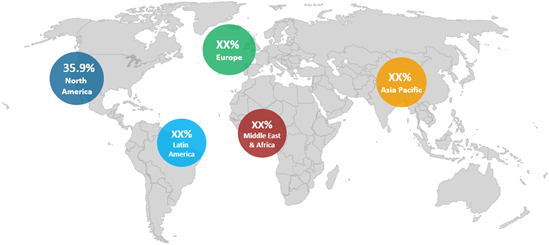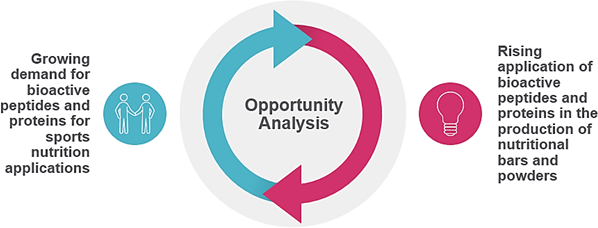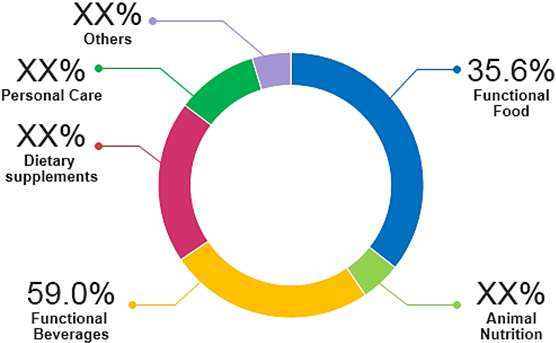Bioactive peptides and proteins are derived from food and possess health-promoting properties and can be classified into antihypertensive, antibiotic, anticancer, and antioxidant. Peptides are released during the breakdown of protein that contains different amino acids. Some of which are bioactive and this peptide may get attached to receptors in the intestine after food being absorbed in the digestive tract. Some of the bioactive protein may also get into the bloodstream where they can produce their beneficial effects on the body. Some of the bioactive peptides are also derived from spirulina as it is known for high protein content and excellent therapeutic properties.
The global bioactive proteins and peptides market is projected to reach US$ 88.3 billion by the end of 2027, in terms of revenue, growing at CAGR of 8.2% during the forecast period (2019 to 2027).
Drivers
Growing disposable income of the population is encouraging them to spend on functional foods and beverages is expected to propel the market growth of bioactive peptides and proteins. According to the Coherent Market Insights, global per capita spending on food consumption through nutritional sources was accounted for 2,940 Kilocalories in 2015. Therefore, this increase in disposable income and per capita rise in food expenditure has boosted the growth of global bioactive proteins and peptides market.
Growing demand for bioactive proteins and peptides in cosmetics and personal care products is expected to foster market growth. Proteins are known for providing strong moisturizing in cosmetic products. Moreover, proteins derived from animal segments were being also used as cosmetic ingredients. Therefore, expanding the application of bioactive protein and peptide in cosmetic and personal care products is accelerating the market growth over the forecast period.
Regionally, North America dominated the global bioactive proteins and peptides market in 2018, reporting 35.9% market share in terms of revenue, followed by Asia- Pacific and Europe, respectively.
Figure 1. Global Bioactive Proteins and Peptides Market, Revenue Share (%), By Region, 2018

To learn more about this report, Download Free Sample
Market Restraints
Factors such as proper dosage and frequency of administration of protein and peptide are impossible to determine and excessive consumption of proteins and peptide may have potential side-effects. Moreover, the presence of immunogenic proteins and peptides in proteins may cause an allergic reaction and severe health issues. The aforementioned factors are expected to hinder the market growth of bioactive peptides and proteins over the forecast timeframe.
High investment cost in licensing and regulatory processes, resulting in an overall increase in operational cost for the manufacturer. According to the Coherent Market Insights, market players in the North America region has to provide in-depth information on the technical data, structural modifications of genetically modified microorganisms (GMMs), and the manufacturing and purification process to the FDA government for grant of the generally recognized as safe (GRAS) status. Therefore, high investment cost in the regulatory process is hindering the market growth.
Market Opportunities
Growing demand for bioactive peptides and proteins from sports nutrition applications is expected to offer immense growth opportunities to the market in the near future. According to Coherent Market Insights, the global bioactive protein and peptides market for sports nutrition applications is a high growth segment and is expected to register a CAGR of 6.2% during the forecast period. Therefore, emerging sports nutrition application is propelling the market growth of bioactive peptides and proteins.
The rising application of bioactive peptides and proteins in the production of powders and bars is expected to foster market growth over the forecast period. For instance, in August 2018, Herbalife Nutrition has announced the introduction of the Herbalife24 Achieve Protein Bar that offers 20 grams of high-quality whey and milk protein, made with whole food-derived ingredients. This new product was developed to meet the demands of all athletes including elites, weekend warriors and every day looking to live a healthier and happier life.
Figure 2. Global Bioactive Proteins and Peptides Market – Opportunity Analysis

To learn more about this report, Download Free Sample
Market Trends
Plant-based bioactive peptide and proteins are gaining traction in the market due to the presence of low cholesterol and saturated fat content of the plant ingredient. This factor is exepcted to propel the market growth of bioactive peptides and proteins. For instance, in November 2018, BASF introduced PeptAIde, a sports nutrition ingredient containing a unique set of plant-based peptides identified using artificial intelligence (AI), for regulating inflammation. Therefore, high demand for plant-based bioactive peptides and proteins is propelling the market growth.
Increasing adoption of growth strategies such as partnerships by major players in order to expand their presence in the market and fulfill the rising demand for the peptide-based dietary supplement is accelerating the market growth. For instance, in January 2019, Nuritas and Pharmavite enter into partnership on bioactive peptides in supplements. The partnership plans to leverage Nuritas’ technology platform, which combines AI and DNA analysis to forecast, unlock and validate bioactive peptide ingredients.
Figure 3. Global Bioactive Proteins and Peptides Market, Revenue Share (%), By Application, in 2018

To learn more about this report, Download Free Sample
On the basis of application, in 2018, functional food accounted the largest market share of 35.6% in terms of revenue, followed by functional beverages and dietary supplements, respectively.
Regulations
In the U.S, the Food and Drug Administration (FDA) forms and regulates nutraceuticals including protein and peptides. FDA is authorized to take action against any unsafe product after it reaches to market place. Moreover, manufacturers are not obliged to register their product with the FDA or get the approval of the FDA before selling nutraceutical products to market, but if it's found any misleading or unmatched information as described in the product label. FDA has the authority to cancel the license of that manufacturer
Competitive Section
Key players operating in the global bio active protein and peptides are Archer Daniels Midland Company (ADM), Kerry Group, Cargill Inc., Omega Protein Corporation, Bunge Ltd., E.I., Du Pont De Nemours and Company, Fonterra Co-operative Group Ltd., Royal DSM and CHS Inc.
Few Recent Developments
Archer Daniels Midland Company (ADM)
Share
Share
Missing comfort of reading report in your local language? Find your preferred language :
Transform your Strategy with Exclusive Trending Reports :
Frequently Asked Questions
Select a License Type
Joining thousands of companies around the world committed to making the Excellent Business Solutions.
View All Our Clients